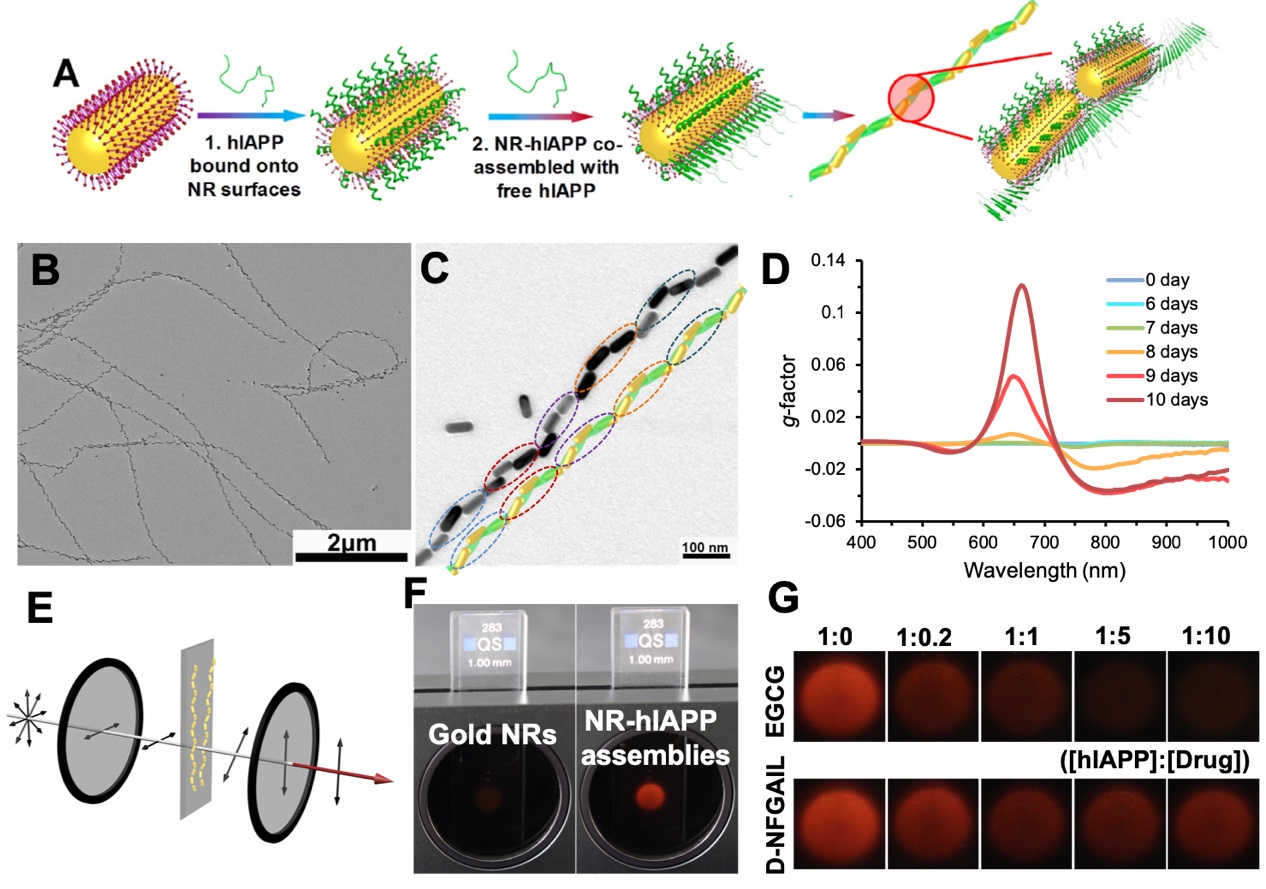
Jun Lu,Yao Xue, Kalil Bernardino, Ning-Ning Zhang,Weverson R. Gomes, Naomi S. Ramesar, Shuhan Liu, Zheng Hu,Tianmeng Sun, Andre Farias de Moura*, Nicholas A. Kotov*, Kun Liu*
Science, 2021, 371, 1368.
Chiral assemblies of plasmonic nanoparticles are known for strong circular dichroism but not for high optical asymmetry, which is limited by the unfavorable combination of electrical and magnetic field components compounded by strong scattering. Here, we show that these limitations can be overcome by the long-range organization of nanoparticles in a manner similar to the liquid crystals and found in helical assemblies of gold nanorods with human islet amyloid polypeptides. A strong, polarization-dependent spectral shift and the reduced scattering of energy states with antiparallel orientation of dipoles activated in assembled helices increased optical asymmetry g-factors by a factor of more than 4600. The liquid crystal–like color variations and the nanorod-accelerated fibrillation enable drug screening in complex biological media. Improvement of long-range order can also provide structural guidance for the design of materials with high optical asymmetry.

Read more at Enhanced Optical Asymmetry in Supramolecular Chiroplasmonic Assemblies with Long-Range Order


